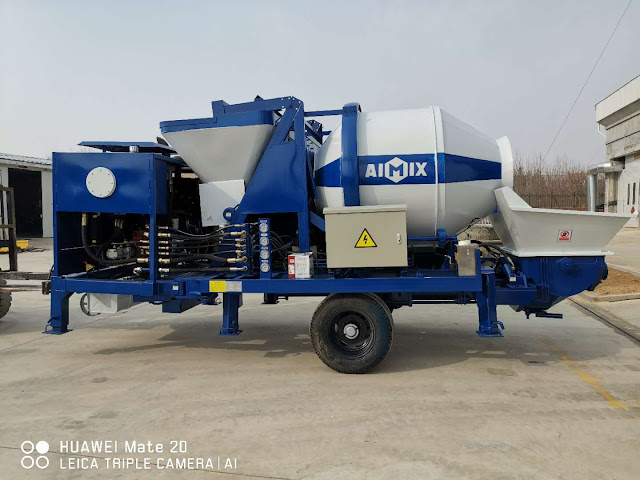Hydraulic System of Self-Loading Concrete Mixer
The hydraulic system plays a crucial role in the functionality and performance of a self-loading concrete mixer. It is responsible for powering various components of the mixer, ensuring smooth operation, and contributing to the overall efficiency of concrete production. In the construction industry, a well-designed hydraulic system is essential for improving productivity and ensuring safety. This article will explore the key features of a hydraulic system in a self-loading concrete mixer and how it enhances the equipment’s performance on construction sites.
1. Overview of the Hydraulic System
The hydraulic system in a self-loading concrete mixer(venta de autohormigonera) is designed to perform several critical tasks, including powering the mixer drum, controlling the lifting and tilting mechanisms, and facilitating the movement of the mixer’s various arms and components. Hydraulics use pressurized fluid to transmit force, making it possible to operate heavy machinery with ease. The system is integrated with the engine and other parts of the mixer to provide smooth, efficient operation, reducing the physical effort required by the operator and increasing overall output.
2. Components of the Hydraulic System
A high-quality hydraulic system in a self-loading concrete mixer consists of several essential components, each serving a specific function to ensure optimal performance:
Hydraulic Pump
The hydraulic pump is the core component of the hydraulic system. It generates the pressure needed to move hydraulic fluid through the system. In a self-loading concrete mixer(autohormigonera en Perú), the hydraulic pump powers the lifting arms, drum rotation, and other moving parts. The quality and capacity of the pump determine how effectively and quickly the system can respond to operational demands. A reliable pump ensures smooth mixing and efficient loading and unloading of concrete, minimizing downtime.
Hydraulic Cylinders
Hydraulic cylinders are used to lift and tilt various components of the self-loading concrete mixer. These cylinders convert hydraulic energy into mechanical force, allowing the mixer to perform tasks such as raising the drum, tilting it to discharge the mixed concrete, and adjusting the loading arms. The strength and durability of the hydraulic cylinders are critical for long-lasting performance and the ability to handle heavy loads of concrete efficiently.
Hydraulic Valve
The hydraulic valve controls the flow of hydraulic fluid within the system. It determines the direction, speed, and pressure at which fluid is delivered to the various components of the self-loading concrete mixer. By adjusting the hydraulic valve, operators can fine-tune the performance of the mixer to suit the specific needs of the construction project. A well-designed hydraulic valve ensures precise control, leading to smoother and more efficient operation.
Hydraulic Fluid
Hydraulic fluid plays a key role in the hydraulic system, as it carries the energy from the pump to the hydraulic cylinders and other components. The type and quality of hydraulic fluid used in the self-loading concrete mixer can impact the system’s efficiency and longevity. High-quality hydraulic fluids provide better lubrication, reducing wear and tear on components and preventing overheating, which is essential for the mixer’s long-term performance in demanding construction environments.
3. Key Benefits of a Hydraulic System in a Self-Loading Concrete Mixer
There are several advantages to using a hydraulic system in a self-loading concrete mixer, making it a preferred choice in the construction industry:
Enhanced Efficiency and Productivity
One of the main benefits of a hydraulic system is its ability to streamline operations. The hydraulic components of the self-loading concrete mixer(autohormigonera en Colombia) allow for faster loading, mixing, and unloading, significantly reducing the time required for each concrete batch. With better control over the mixer’s movements, operators can work more efficiently, leading to higher productivity on the job site. In turn, this contributes to completing projects within the designated time frames.
Precision and Control
The hydraulic system offers precise control over the mixer’s various functions. The hydraulic valves and cylinders allow the operator to adjust the angle, speed, and force at which the drum rotates, ensuring an even and consistent mix. This control is especially important in maintaining the quality of concrete, as even slight variations in the mixing process can affect the final product. With the hydraulic system, operators can maintain a higher level of accuracy and quality in their work.
Reduced Physical Effort and Operator Fatigue
By using hydraulic power to perform heavy lifting and mechanical movements, the self-loading concrete mixer reduces the physical effort required from the operator. This not only makes the machine easier to operate but also helps reduce operator fatigue. With less strain on the operator, the hydraulic system improves safety and reduces the risk of accidents or injuries caused by overexertion.
4. Maintenance and Longevity of the Hydraulic System
Like any other part of the self-loading concrete mixer, the hydraulic system requires regular maintenance to ensure optimal performance. Regular checks on the hydraulic fluid levels, cleaning of the hydraulic filters, and inspection of the cylinders for signs of wear are essential tasks. By following a proper maintenance schedule, the hydraulic system can operate smoothly for years, extending the lifespan of the mixer and reducing the need for costly repairs.
In conclusion, the hydraulic system is an integral part of a self-loading concrete mixer, contributing significantly to its performance, efficiency, and ease of use. From powering the mixer drum to providing precise control over the machine's movements, the hydraulic system ensures that the equipment delivers high-quality results in a timely and cost-effective manner. By understanding how the hydraulic system works and maintaining it properly, operators can maximize the performance of their self-loading concrete mixer and achieve optimal results on construction projects.




Comments
Post a Comment